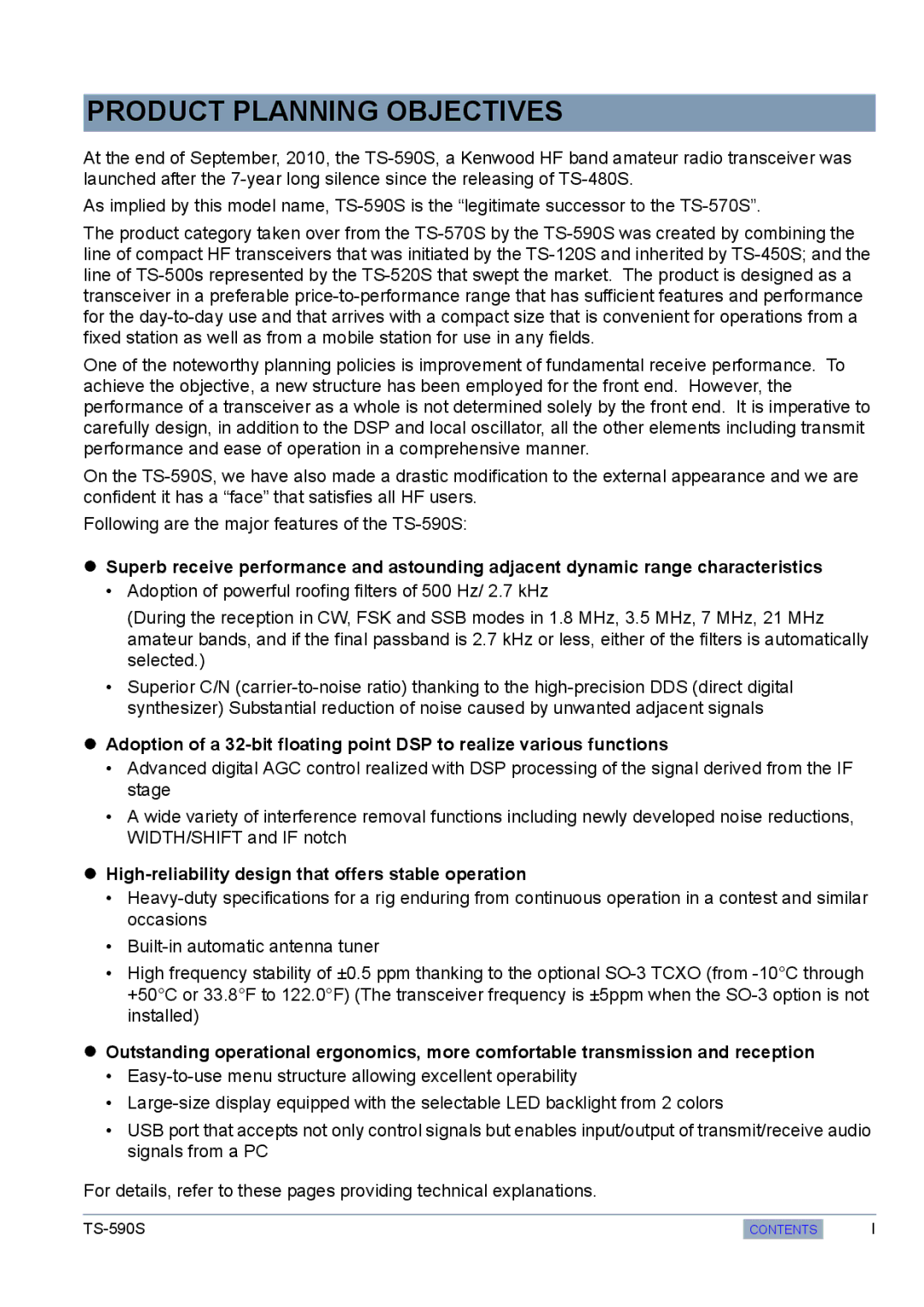
PRODUCT PLANNING OBJECTIVES
At the end of September, 2010, the
As implied by this model name,
The product category taken over from the
One of the noteworthy planning policies is improvement of fundamental receive performance. To achieve the objective, a new structure has been employed for the front end. However, the performance of a transceiver as a whole is not determined solely by the front end. It is imperative to carefully design, in addition to the DSP and local oscillator, all the other elements including transmit performance and ease of operation in a comprehensive manner.
On the
Following are the major features of the
Superb receive performance and astounding adjacent dynamic range characteristics
•Adoption of powerful roofing filters of 500 Hz/ 2.7 kHz
(During the reception in CW, FSK and SSB modes in 1.8 MHz, 3.5 MHz, 7 MHz, 21 MHz amateur bands, and if the final passband is 2.7 kHz or less, either of the filters is automatically selected.)
•Superior C/N
Adoption of a
•Advanced digital AGC control realized with DSP processing of the signal derived from the IF stage
•A wide variety of interference removal functions including newly developed noise reductions, WIDTH/SHIFT and IF notch
High-reliability design that offers stable operation
•
•
•High frequency stability of ±0.5 ppm thanking to the optional
Outstanding operational ergonomics, more comfortable transmission and reception
•
•
•USB port that accepts not only control signals but enables input/output of transmit/receive audio signals from a PC
For details, refer to these pages providing technical explanations.
CONTENTS
I
